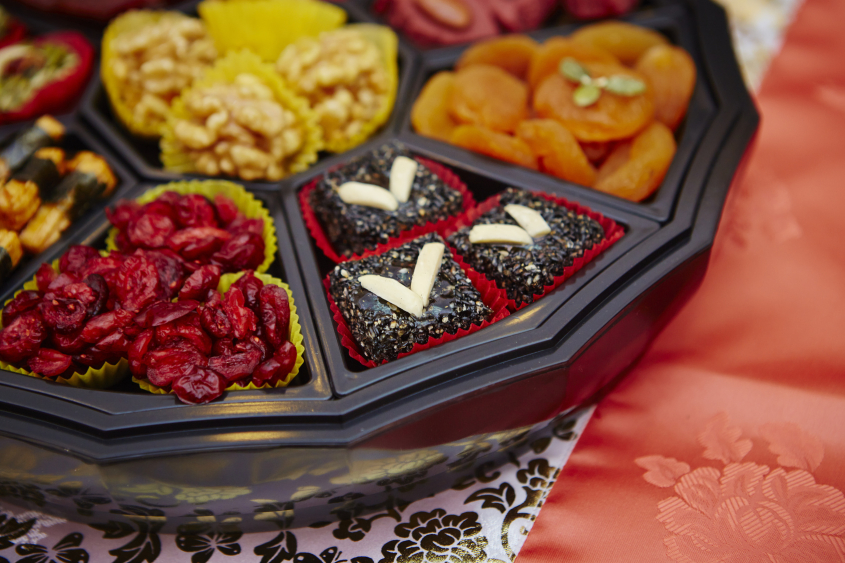Teaching English in Korea: About Korean Food
Before taking off and teaching English in Korea, you need to learn more about Korean food and what your taste buds will be experiencing, as it is an adventure in and of itself!
Korean food is sure to leave every expat’s pallet wanting more. At first you may find it spicy, even exotic, but you will quickly adapt and never look back.
Korean cuisine is so vast that you may not even have a chance to sample all of the wonderful, full-flavored dishes that there are to explore. Even if you are not used to ethnic foods, it is best to put the effort forth and try some dishes, as you will thank yourself for it!
Korean food is part of the foundation of Korean culture and pride. The sheer quantity of dishes, variety of side dishes, and nutritional value of the dishes all contribute to this pride. The Korean meal typically is inclusive of a big bowl of hot soup, many side dishes, rice and a barbeque plate for cooking meat. Korean dishes are mostly free of unhealthy deep-fried foods.
Dining Etiquette
Eating is communal in Korean culture. Everyone at the table eats from the same bowls and dishes or off of the same grill when table cooking for dinners like ‘gal-bi’ or ‘sam-gyup-sal’. Don’t be surprised if you see a roll of toilet paper on the table, even in nicer restaurants, as this is simply a replacement for napkins or paper towels.
In order to get a server’s attention in a restaurant, patrons simply yell out “Yogi-yo!” meaning, ‘I’m here’. The server then tends to the table and often takes care of cooking the meat on the grill. This might not be the best method to practice in your home country, but it is the way things are done in Korea. Tipping at a restaurant is also not practiced in Korea, so you need not feel rude when leaving exact change after your meal.
History of Kimchi
Kimchi has been in Korean culture for over 3000 years. It is not only a staple at every meal; it is also used to cook a variety of Korean dishes. The Kimchi Museum in Seoul has documented 187 varieties of historic and current recipes.
Koreans claim that it is one of the healthiest foods in the world, a statement which has been backed by many Western nutritionists. It is packed with vitamins A, B, and C, but the “healthy bacteria” called lactobacilli, which is found in fermented foods like yogurt and kimchi, helps with things like digestion. Even more importantly, studies have shown that fermented cabbage has elements that may prevent the growth of cancer.
Top 10 dishes that are a “must try” for every new person to Korea:
1. 김치 (Kim-chi): fermented napa cabbage, this is Korea’s national dish, and is eaten with every meal
2. 김밥 (Kim-bap): Korean sushi
3. 만두 (Mandu): Korean dumpling
4. 비빔밥 (Bi-bim-bap) mixed rice with vegetables, egg and spicy sauce
5. 삼겹살 (Sam-gyup-sal): pork that you barbeque on a table grill, a traditional dish
6. 갈비 (Gal-bi): beef that you barbeque on a table grill
7. 불고기 (Bul-go-gi): marinated beef – can be sweet and salty
8. 떡볶기 (Duk-bok-gi): thick rice noodles with spicy sauce (a common street food) in a deep hot pot
9. 김치볶음밥(Kimchi bokum-bap): rice mixed with kimchi
10. 샤부샤부(Shaboo-shaboo): sliced meat and vegetables
Other ‘Unique’ Foods
Don’t be alarmed if you see people eating grasshoppers, live squid or bugs – this is part of what makes things different, not wrong! You can’t say you don’t like it unless you have tried it! When in Rome!
Raw fish and a variety of seafood are also popular in Korea. Warning: if you decide to eat ‘live’ squid, be sure to eat it in small amounts and chew it thoroughly before you swallow. The ‘suckers’ can stick to your throat! Secondly, if you eat blow fish (a more expensive and tasty meal choice), be sure that it is at a reputable restaurant, with a reputable chef. There is poison in blow fish and restaurants hire professional chefs to take this out. It is delicious when you don’t have the fear of poisoning yourself!
Western-Style Food ( in Korea)
If you are a pickier eater or if you just need a taste from home, not to worry, as western food is available in Korea. In the larger cities, there are western restaurants like McDonalds, Dunkin Donuts, TGI Fridays, Bennigans, Outback Steakhouse, etc.
Also, there are usually a few aisles in every grocery store (namely the larger ones) that have western food. Name brand peanut butter, jams, sauces, etc. will cost you a little more, but not too much and they might be worth the extra if you have a craving! There are also a few Costco stores in Korea – great for desired western foods like cheese. Tip: If you have room in your luggage, it is a good idea to bring some comfort good, such as your favorite cereals, spices, with you.
Desserts are not very popular in Korea. Not to worry though, if you are a lover of sweets, you will be able to find some treats at local bakeries or corner stores – there are also plenty of 7/11’s in Korea that can satisfy your sweet tooth.
If you are a fan of salty food, and a chip lover in particular, you may be surprised to find – in lieu of the traditional salt and vinegar or ketchup flavors – shrimp, squid, octopus and other delightful seafood flavor supplements!
Korea offers some great pizza and sandwich (or ‘toast’) shops now too, which often cater to a western pallet. Be warned though, as some sandwiches will come with cabbage inside and pizza often includes corn and potato as standard toppings. Don’t be shy to ask for these ‘add-ons’ to be excluded from your order if you don’t want them…potato pizza is pretty delicious though!
Being a Vegetarian in Korea
It is a little bit difficult to be a vegetarian in Korea at least when you first get there. Once you have figured out what vegetarian Korean foods you like, things will be much easier (and tastier!) for you. Here are some standard vegetarian Korean dishes. Be sure to ask for no meat to ensure it isn’t added to the dish, which sometimes happens.
김치볶음밥(Kimchi bokum-bap): rice mixed with fried kimchi
떡볶기 (Dduk-bbok-gi): thick rice noodles with spicy sauce (a common street food)
된장찌개 (Dwen-jang jjiggae): tofu, potato soup
김치찌개 (Kim-chi jjiggae): kimchi soup
순두부 찌개 (Soon-doo-boo jjiggae): spicy tofu soup
비빔밥 (Bi-bim-bap) mixed rice with vegetables, egg and spicy sauce


